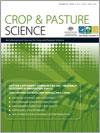Regional climactic variability coupled with an increasing demand on water has placed an even greater pressure on managers to understand the complex relationships between surface water and groundwater in the Murray–Darling Basin. Based on limited soil sampling combined with geophysical observations, past research has suggested that relic subsurface drainage features (also known as palæochannels) have a higher risk of deep drainage and lateral flow, particularly where water is impounded or applied as irrigation. The aim of this study was to investigate the hydrological behaviour of an irrigated 25-ha site in North-western New South Wales in more detail to predict deep drainage risk in the presence of palæochannel systems. Several years of direct and indirect observations, including soil sampling and groundwater measures, were collected. Coupling the field data with one- and two-dimensional water balance models revealed a more complex behaviour where a palæochannel functions like a large underground drain. In contrast to other studies, this study suggests that the actual palæochannel does not pose a higher drainage risk, but the combination of the palæochannels with the surroundings soils does have a higher deep drainage risk.
How to translate text using browser tools
11 November 2013
Hydrological and water-use efficiency implications of geomorphological stratification in palæochannels in the Northern Murray–Darling Basin
C. P. Vanags,
R. W. Vervoort
ACCESS THE FULL ARTICLE

Crop and Pasture Science
Vol. 64 • No. 12
Dec 2013
Vol. 64 • No. 12
Dec 2013
deep drainage risk
groundwater
palæochannel
soil data
water balance modelling




